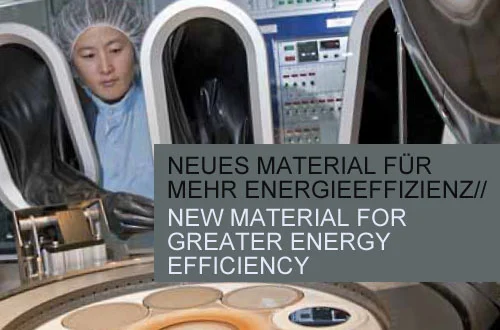New material for greater energy efficiency
Almost every electrical device has them, whether computer network componentry, solar modules or electric cars. Power converters convert ac to dc and vice versa and make sure that the voltage from the grid is just right for each consumer. The heart of these electrical circuits takes the form of transistors, in principle switches that can be actuated by a voltage placed across them. Up until now, power transistors were manufactured on a silicon basis. Yet gallium nitride (GaN) could make these components faster, more efficient and smaller.
Already more than ten years ago researchers at Adlershof ranked among the world’s GaN pioneers. Now, power electronics based on this material are to be developed into a marketable commodity. Coordinated by the Ferdinand-Braun-Institut, Leibniz-Institut fuer Hoechstfrequenztechnik (FBH), the EU project HiPoSwitch combines the skills and resources of eight European partners from universities and industry, including Infineon Technologies Austria, the Belgian EpiGaN, the Aachen systems engineer Aixtron and the Austrian company Emerson. The project therefore focuses on the whole process stream, from the development of the materials to the manufacture and assembly of the transistors into componentry.
At the FBH, researchers are developing so called enhancement type transistors. The advantage: they don’t need an extra negative voltage to switch off. As soon as the control voltage approaches zero, e.g. in the event of a malfunction, the transistor does not allow any more current to pass through. “The result is better operating reliability,” remarked Joachim Würfl, Director of GaN Electronics at the FBH, explaining that reliability is altogether the crucial factor if this technology is to gain acceptance. As a consequence, the components manufactured on silicon or silicon carbide in the clean room are subjected to exhaustive examinations in the laboratory. Among these examinations, Würfl and his colleagues also test the aging characteristics: “We want to find out what ultimately causes the component to die.”
One crucial factor in this respect is the temperature, which rises sharply and must be conducted away while the components are operating. The components are therefore heated specifically to 200–300 °C in ovens no larger than cigarillo and operated under these conditions and their electrical characteristics monitored continuously. Tests of this kind can take up to a year before they can return values for service lives, extrapolated if necessary over a human lifetime.
GaN based power electronics promise savings potential not only in the electronic components themselves. “When they can be mass produced at low cost and we can make them even smaller, there will be a greater incentive to use them for the tailored and therefore more efficient supply of power to other consumers,” believes Würfl. “There is considerable potential here for energy savings.”
Dr. Uta Deffke
Internet: www.fbh-berlin.de
